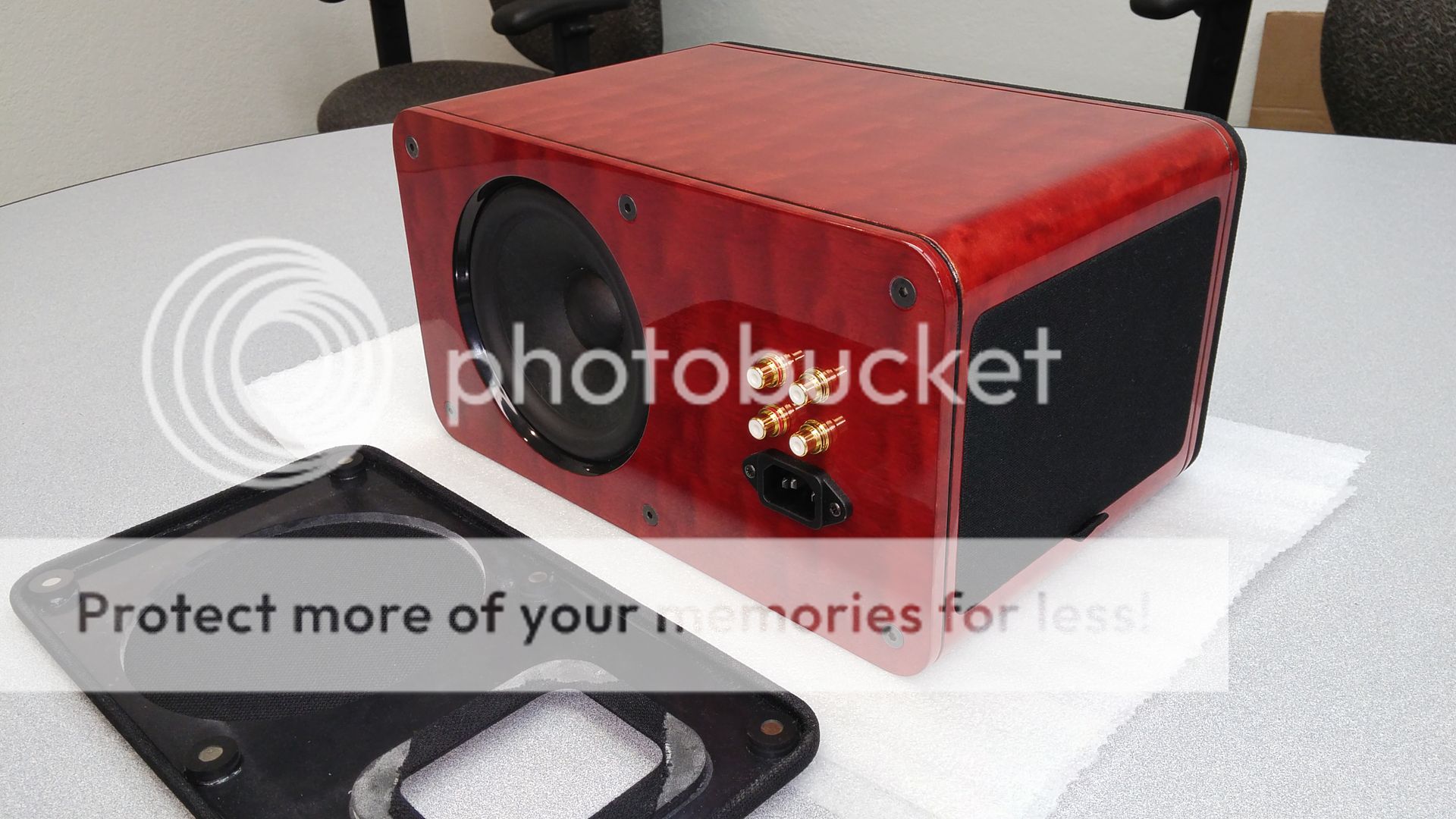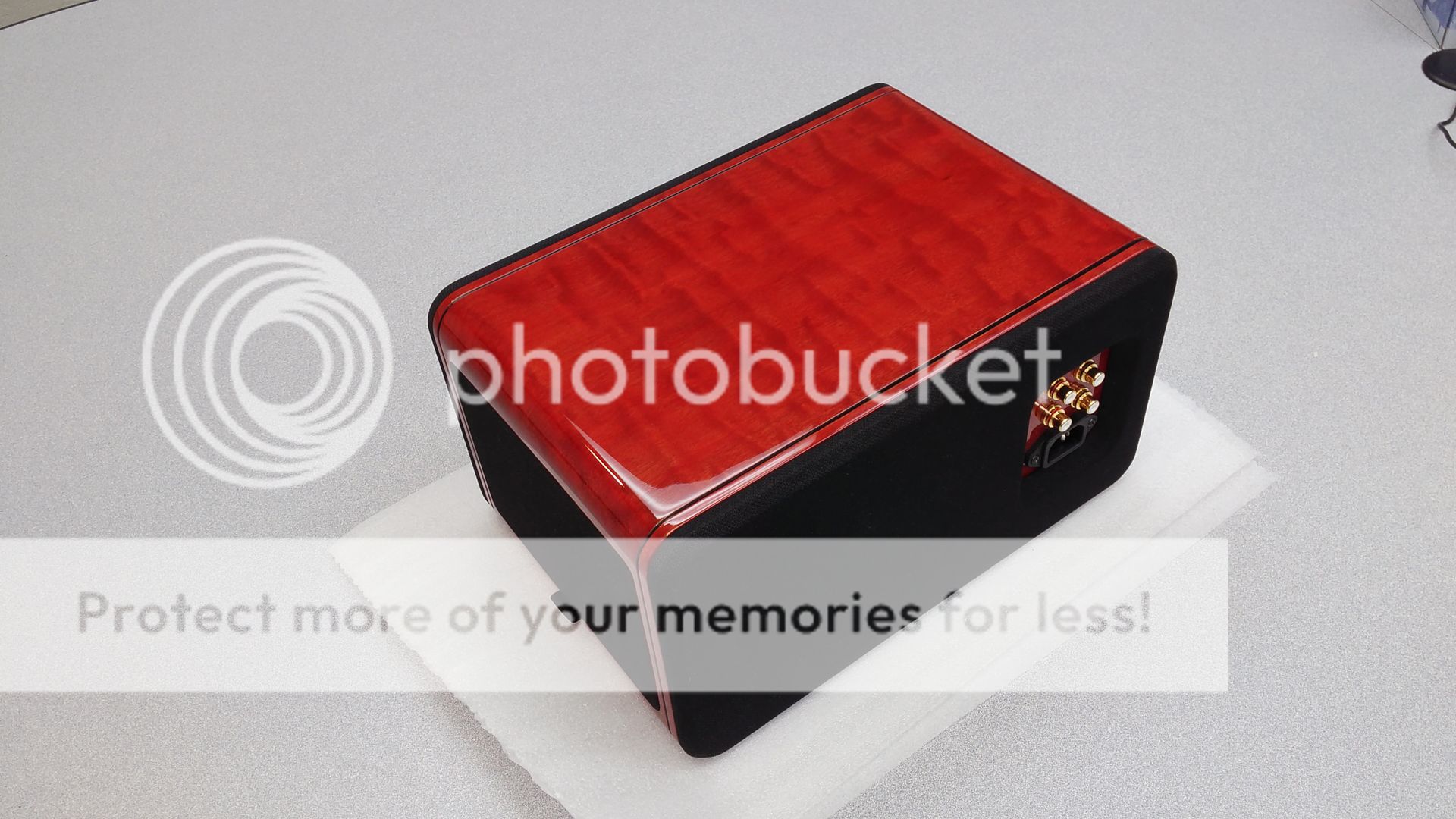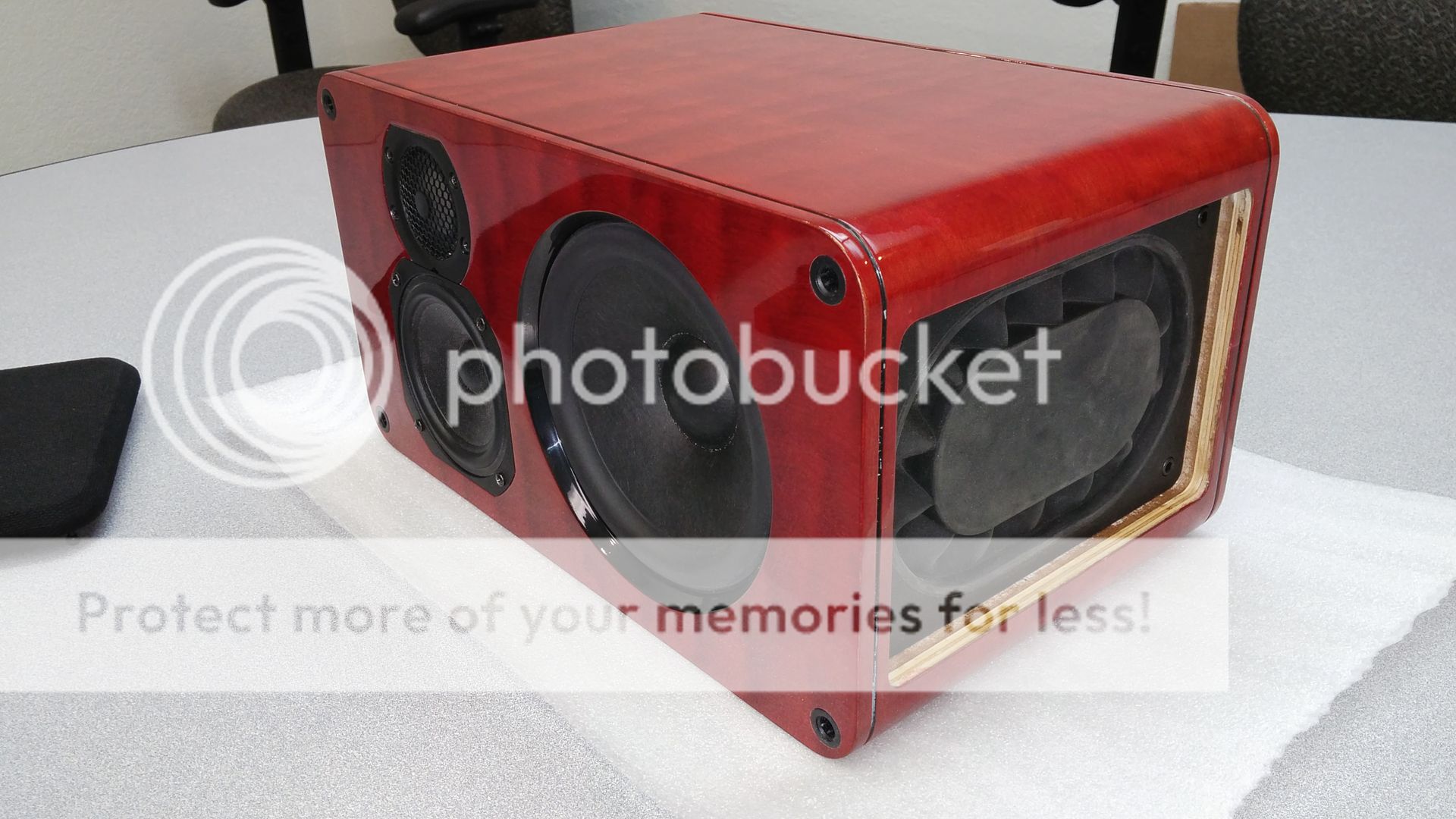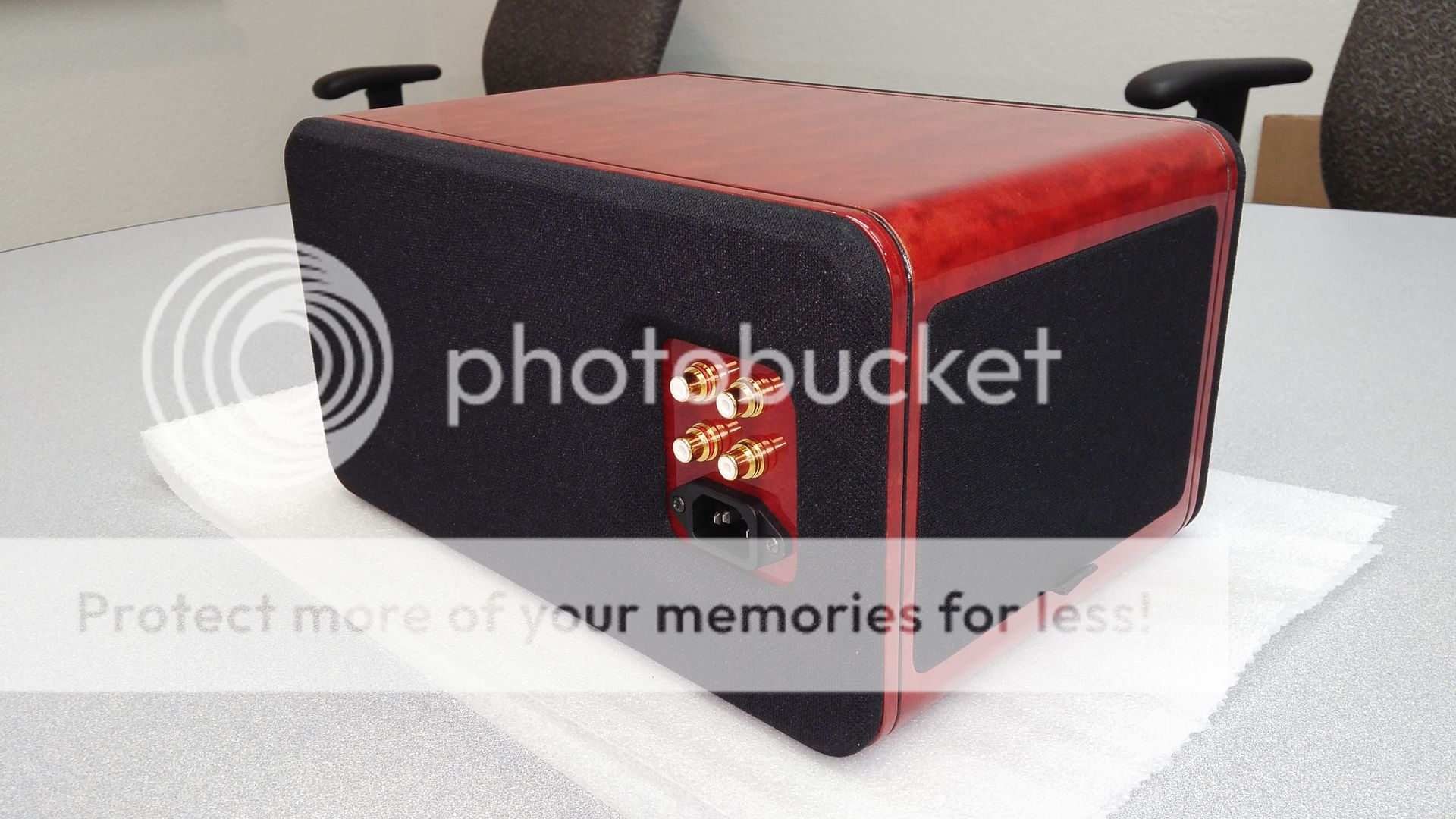bcodemz, I owned Barefoot MM27 (first gen) for 5 years or so. I noticed your cabinet is much thinner compared to them. Is it because they are BBC influenced design?
Yes, and it is also really convenient this way because for a speaker this small, wall thickness can significantly increase the size of the speaker. Just using 1" walls with no other changes on these speakers automatically means the speaker is 68% bigger 😱
That's a great speaker you had there. One thing I want is to have a really high quality studio monitor to compare it against, but can't justify spending $10-20k on one just for a comparison. Eventually I do need to do just that though if I want to make sure I'm actually doing things right.
Last edited:
Some pictures of progress
Enclosure
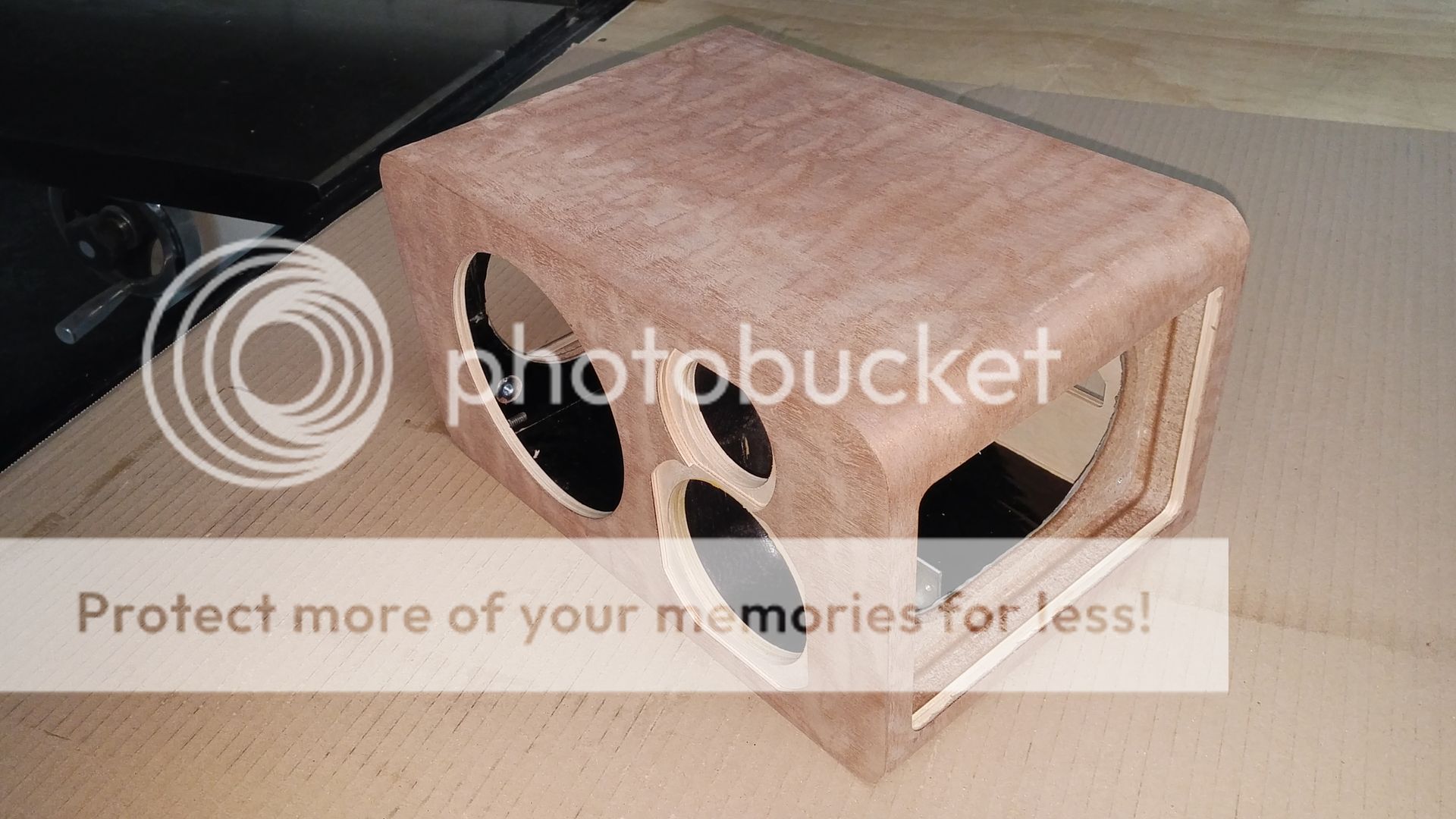
A little closer look at how tight things are inside with the amp and midrange enclosure.
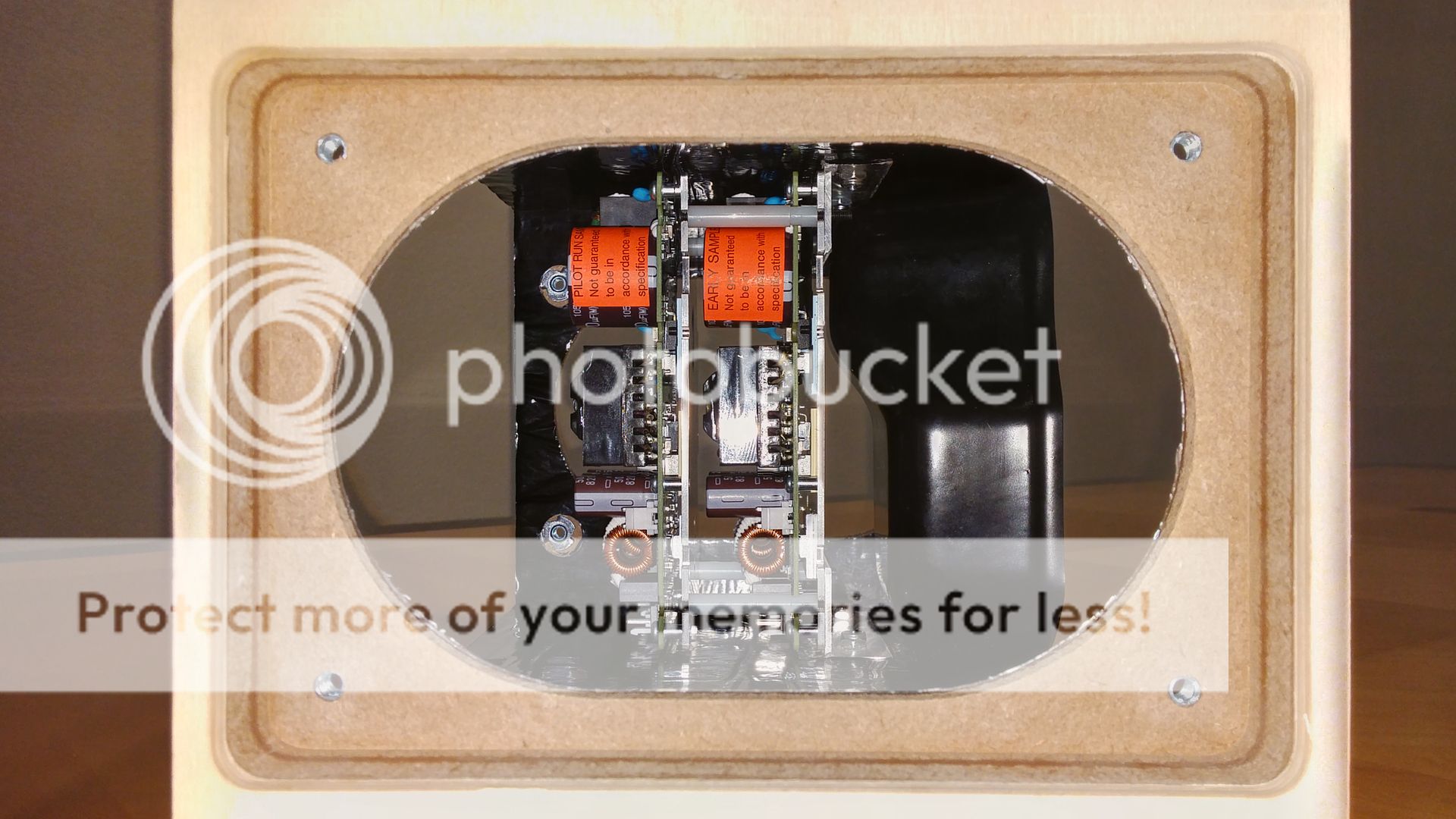
This is a molded ABS plastic enclosure to minimize the enclosure volume taken up inside. It is also stronger and more rigid than plywood while being thinner.
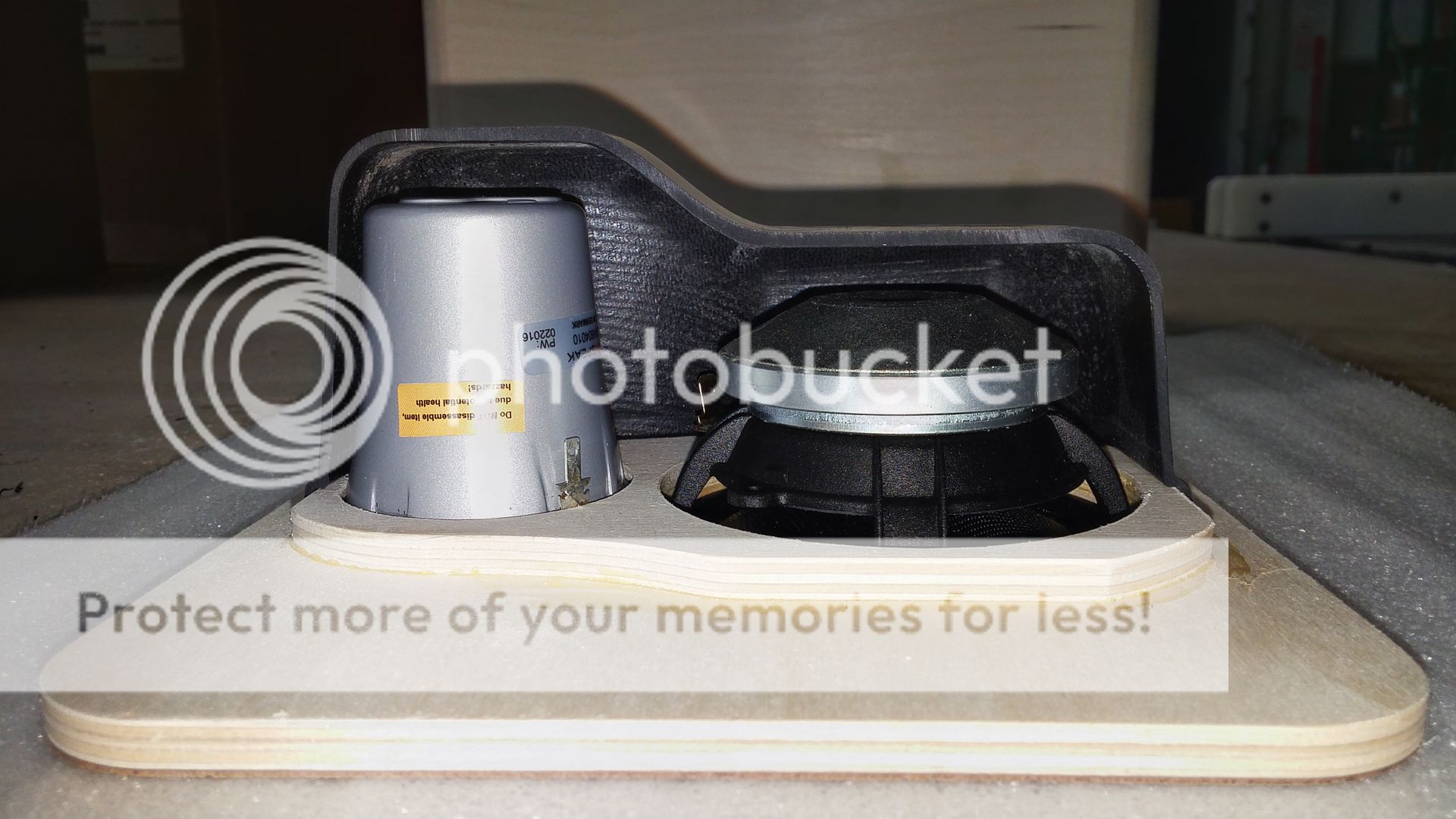
Enclosure

A little closer look at how tight things are inside with the amp and midrange enclosure.

This is a molded ABS plastic enclosure to minimize the enclosure volume taken up inside. It is also stronger and more rigid than plywood while being thinner.

Excellent craftsmanship. Did you do the molds yourself?
I have an amazing friend who made the molds and the stunning craftsmanship that you see, and you'll continue to see below.
Here's some work with the speaker grills

He's going way above and beyond by ultrasonic welding the nylon tabs for the grill!

Picture of the speaker with the grills on.
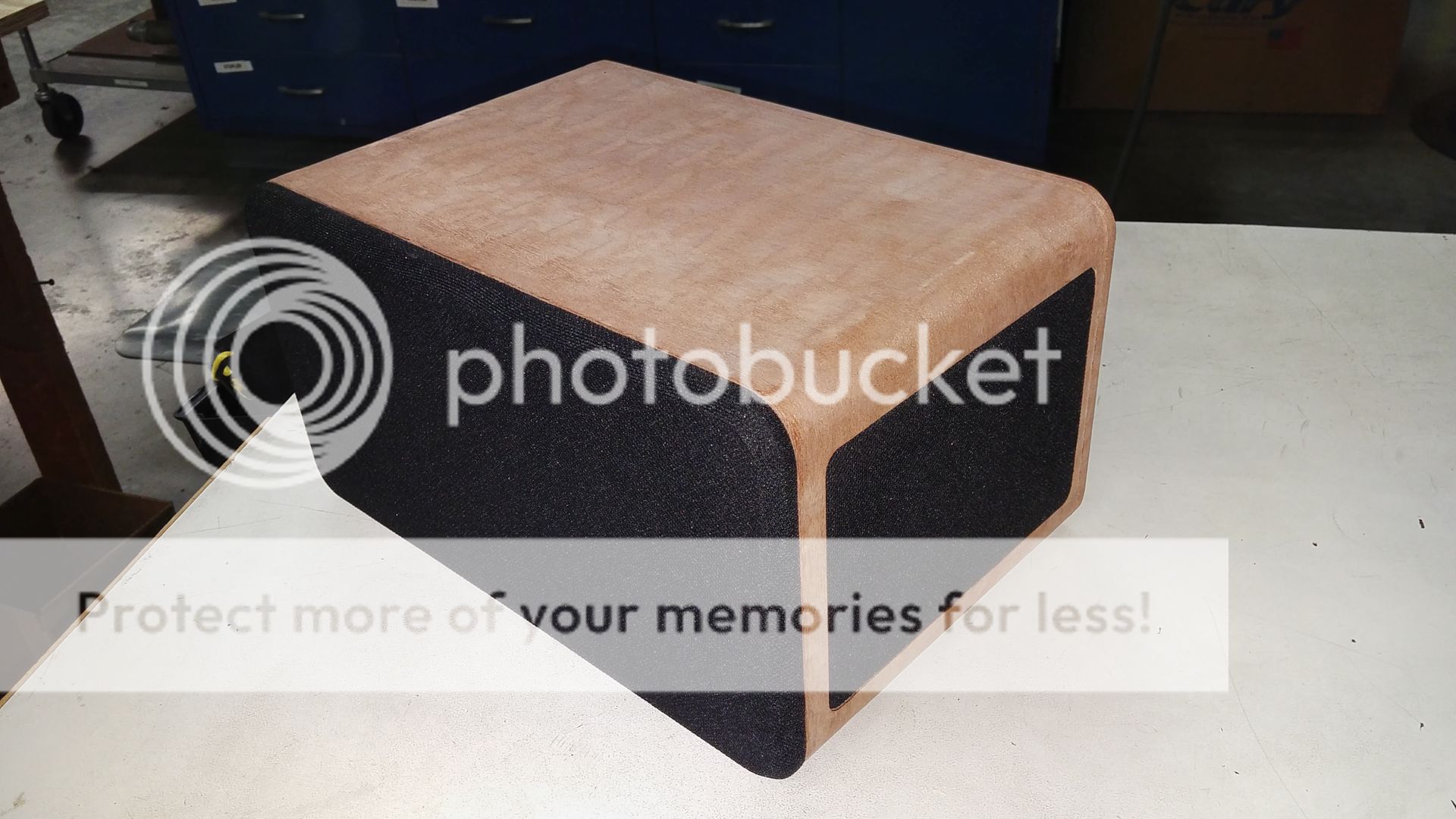
Picture of the veneered and stained enclosure.
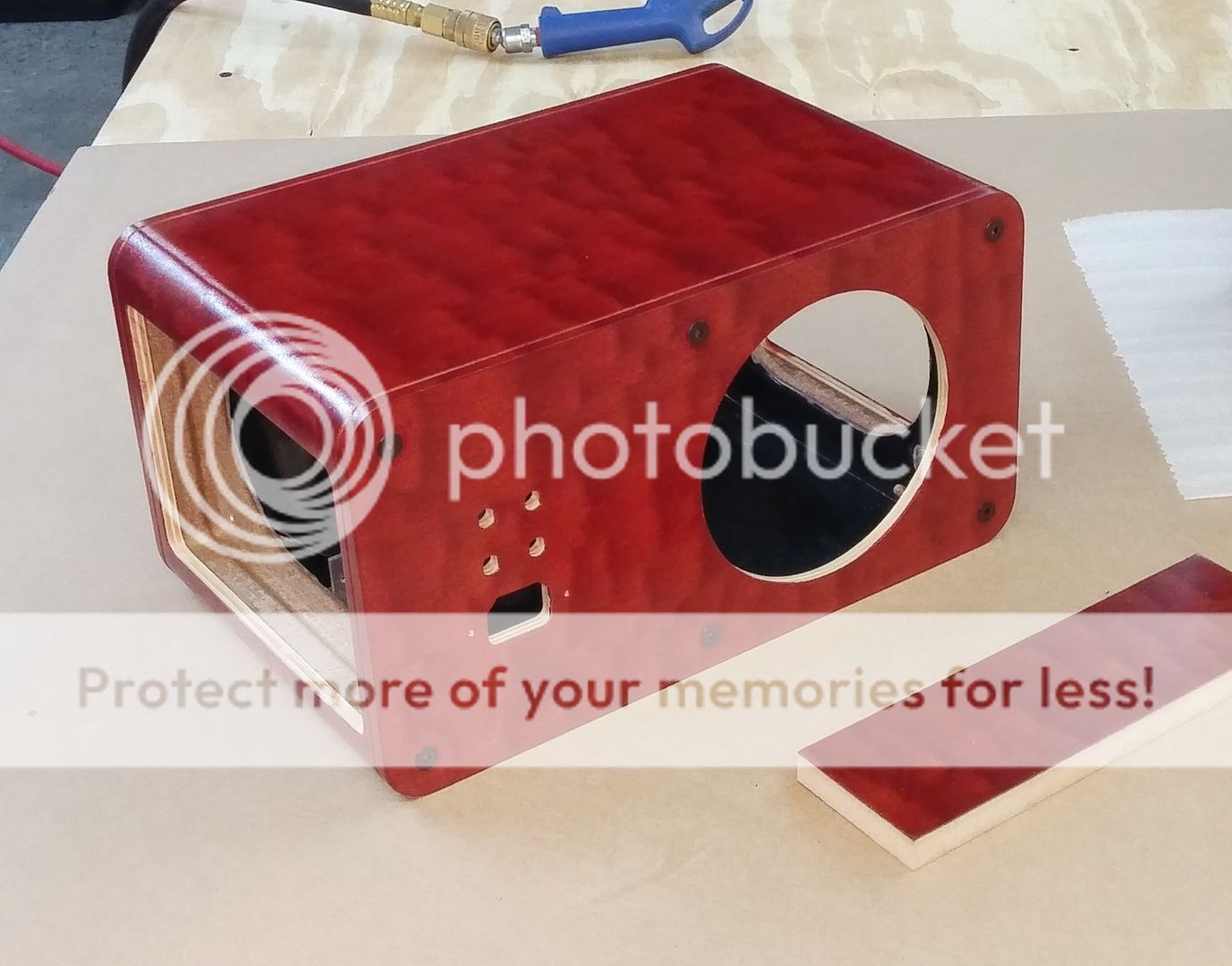
Here's a piece with a 2k urethane high gloss on. The entire enclosure will have this kind of automotive high gloss finish.
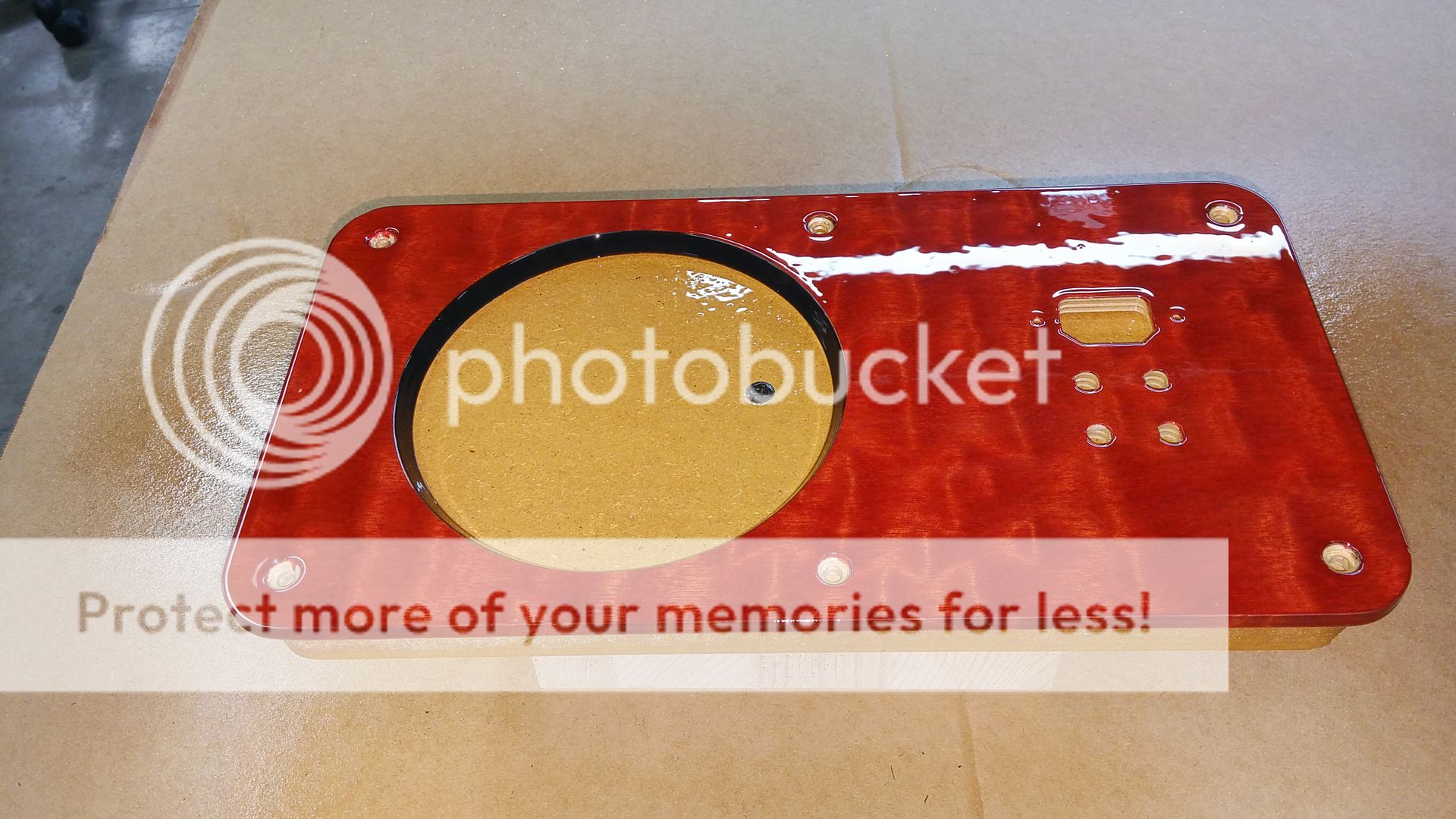
A closer look of the passive radiator

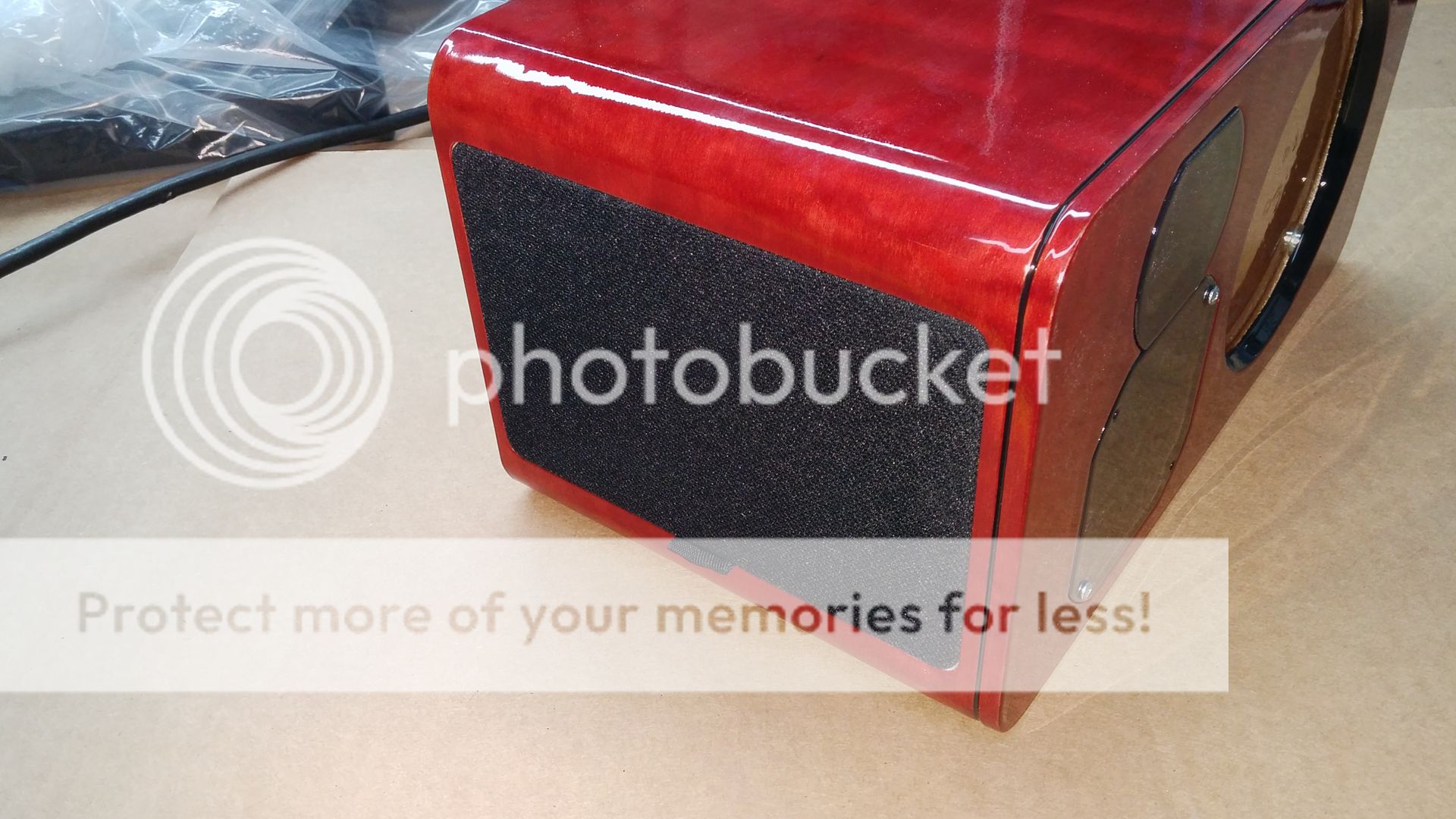

Here's a piece with a 2k urethane high gloss on. The entire enclosure will have this kind of automotive high gloss finish.

A closer look of the passive radiator


Your cabinet reminds me of les paul guitars with quilted finish, looks great!
Any more details about the dsp solution for us who dont know about pc dsp?
Any more details about the dsp solution for us who dont know about pc dsp?
bcodemz,
Very cool! From start to finish, well thought out and executed, kudos!
Wish I could give them a listen. 🙂
Very cool! From start to finish, well thought out and executed, kudos!
Wish I could give them a listen. 🙂
The Anaview ALA0080 amp is small. It runs off 12-24V DC.
I used them for midrange+tweeter and thought they worked quite well.
I worked at Anaview, two years ago. If me recommending their product poses a problem, please remove this post.
I used them for midrange+tweeter and thought they worked quite well.
I worked at Anaview, two years ago. If me recommending their product poses a problem, please remove this post.
Thanks everyone.
The PC DSP is just JRiver's DSP studio running on a MacBook Pro.
And Jonhny, I have absolutely no problem with your recommendations. I actually wish more people would recommend stuff. A lot of what you see is from recommendations from others, including JRiver for the DSP.
The PC DSP is just JRiver's DSP studio running on a MacBook Pro.
And Jonhny, I have absolutely no problem with your recommendations. I actually wish more people would recommend stuff. A lot of what you see is from recommendations from others, including JRiver for the DSP.
First those are absolutely beautiful speakers.
I may disagree on your opinion of thick wall vs. thin wall argument. Thick wall although it pushes the resonant freq. higher, but consider these two variables:
1. It will take more energy to excite a thick and well braced wall vs. a thin and weak wall.
2. At high freq., the drivers do no have as much energy vs. the lower freq.
Add these two factors together, the overall resonant of the wall will be less vs. thin wall.
I may disagree on your opinion of thick wall vs. thin wall argument. Thick wall although it pushes the resonant freq. higher, but consider these two variables:
1. It will take more energy to excite a thick and well braced wall vs. a thin and weak wall.
2. At high freq., the drivers do no have as much energy vs. the lower freq.
Add these two factors together, the overall resonant of the wall will be less vs. thin wall.
First those are absolutely beautiful speakers.
I may disagree on your opinion of thick wall vs. thin wall argument. Thick wall although it pushes the resonant freq. higher, but consider these two variables:
1. It will take more energy to excite a thick and well braced wall vs. a thin and weak wall.
2. At high freq., the drivers do no have as much energy vs. the lower freq.
Add these two factors together, the overall resonant of the wall will be less vs. thin wall.
While your points are correct, there is a smart way of using the properties of thin wall cabinets to never excite the resonant frequency. Consider this. A thin wall cabinet greatly lowers the resonant frequency, and for walls as thin as mine, it is below the midrange band. For a midrange enclosure, it will never excite the resonant frequency because it is out of the midrange driver's band. Therefore, a thin wall is less resonant since it never gets excited in the first place.
The resonant frequency will be in the woofer band. So, for the woofer enclosure, I'll brace it so the resonant frequency is pushed high enough so that it is out of the woofer band and never gets excited.
The thin wall enclosure technique here isn't so much about reducing the amplitude of the resonant frequency, because it does the opposite. It is about moving the resonant frequency around so it never gets excited by the driver it is housing. Resonant frequency of a panel can only be pushed up, not down. Normal thickness wall's resonant frequency cannot be pushed low enough to be out of the midrange, but a thin wall can.
Last edited:
While your points are correct, there is a smart way of using the properties of thin wall cabinets to never excite the resonant frequency. Consider this. A thin wall cabinet greatly lowers the resonant frequency, and for walls as thin as mine, it is below the midrange band. For a midrange enclosure, it will never excite the resonant frequency because it is out of the midrange driver's band. Therefore, a thin wall is less resonant since it never gets excited in the first place.
The resonant frequency will be in the woofer band. So, for the woofer enclosure, I'll brace it so the resonant frequency is pushed high enough so that it is out of the woofer band and never gets excited.
The thin wall enclosure technique here isn't so much about reducing the amplitude of the resonant frequency, because it does the opposite. It is about moving the resonant frequency around so it never gets excited by the driver it is housing. Resonant frequency of a panel can only be pushed up, not down. Normal thickness wall's resonant frequency cannot be pushed low enough to be out of the midrange, but a thin wall can.
I notice the woofer and mid share the same baffle so I would think the energy of the woofer will make its way to the mid as well unless the baffle is made of thick and well braced wood. In my experience it's hard to separate out what we think of high/mid/low frequencies. They are all there interfering with each other. Even if the mid is in a complete separate cabinet, there will be some interference however small it is. The mid itself has some low frequencies too so it's not like it only has high frequencies likewise the bass will have some high frequencies as well. When I build my speakers, I tend to make them all the same just to simplify potential resonant problem.
By the way, the finish of the speakers look amazing. I wish I could do something like that to mine.
- Status
- Not open for further replies.
- Home
- Loudspeakers
- Multi-Way
- Pushing the limits of small speakers - The Reference Mini build thread

